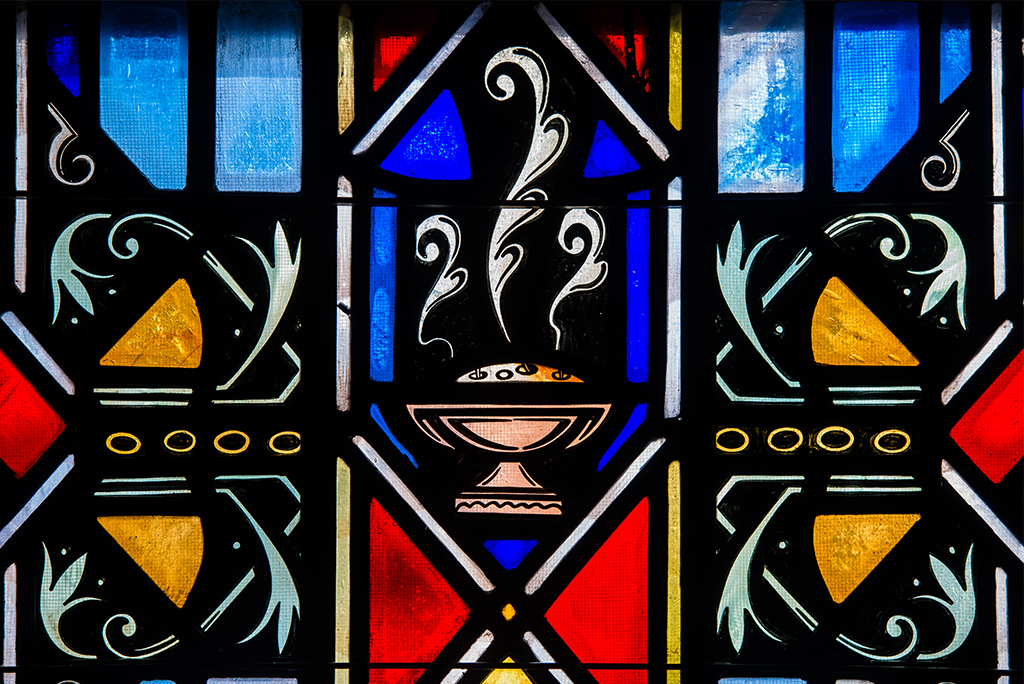
by Pamela J. Nielsen
At the Sept. 17-19 meeting of the LCMS Council of Presidents (COP) in St. Louis, the Rev. Dr. Dean Nadasdy, president of the Minnesota South District, detailed how his district has embraced the Koinonia Project, offering an analysis of its outcomes districtwide.
“I decided I was going to do whatever I could. … We needed this heavily,” said Nadasdy.
The process began in 2015 with a successful field test involving a small group of circuits and eventually led to the involvement of nearly the entire district.
The focus was on unity, concord and harmony. Circuits met monthly with a trained facilitator and were grouped together to provide a mix of diverse views in both doctrine and practice. Participants were assured that no charges or disciplinary action would be pursued flowing from the open, honest, free discussions.
The goal was to “strengthen and fraternally grow in understanding where we don’t have concord,” said Nadasdy, who quoted one discussion participant: “For the first time, I can understand how someone could hold that [opposing] position.”
The district learned much from the process, he noted. Among the outcomes was the discovery that there was more theological unity than anyone anticipated.
“The single most varied practice in the district is admission to the Lord’s Supper,” said Nadasdy.
“Small Catechism served us well”
The discussions went deeper than expected and provided opportunities for the men to encourage and trust each other more fully. A statement of concord, based on the Small Catechism, was developed by a committee from among the participants, with an eye toward a “round two” when district laity will be invited to participate.
“The Small Catechism served us well,” said Nadasdy, who recounted a greater cohesiveness among the clergy. “We learned that we could cross fences to encourage one another.” He pointed to increased involvement in district mission-and-outreach efforts by both the clergy and laity on all sides across the district.
Other district presidents also shared their experiences with the Koinonia Project.
The Wyoming and Atlantic districts, which have a broad diversity of demographics and views on doctrine and practice, met together for several intense sessions. They worked through seven articles of the Augsburg Confession and developed questions for each district. Circuit winkels are now working through those questions.
“My hope and prayer is that the COP would work at this for the remainder of the triennium,” said Synod First Vice-President Rev. Dr. Herbert C. Mueller Jr. “We have work to do, that’s for sure.”
President’s report
President Rev. Dr. Matthew C. Harrison reported on many issues, including the reduction of $4 million in this year’s projected expenditures. He shared detailed financials on the generous giving to disaster relief, including all the recipients of funding in the Texas District. He noted that Christianity Today recommended the LCMS as one of several entities for disaster giving.
“It’s an extraordinary compliment to the great work of our church and our LCMS folks, district by district,” he said.
Harrison spent considerable time talking with the council on the ramifications of the latest full picture of Synod demographics, from which there is new information emerging. As challenging as the picture is, said Harrison, “we are learning some surprising things, and the direction we need to go into the future is becoming clearer and clearer. Stay tuned.”
Harrison also encouraged council members to watch their health, noting that the job of district president comes with considerable stress.
“Stay in the Word of God, do it daily,” the president said. “It’s been the greatest help for me.”
At Harrison’s invitation, the Rev. Dr. Al Collver, the Synod’s director of Church Relations, introduced a delegation from the Evangelical Lutheran Church in Tanzania.
In remarks to the COP, the Rev. Emmanuel Makala, bishop of the South East of Lake Victoria Diocese, acknowledged that the Tanzanian church body has “6.5 million members and we are growing very fast.” But with that rapid growth, he added, the church is facing challenges in managing its finances.
Makala and other representatives of the Tanzanian church expressed a desire to learn from the LCMS and the Lutheran Church Extension Fund in managing and growing their financial assets.
More pastoral candidates needed
The council discussed the continuing reduction in available candidates for the Office of Holy Ministry and challenges related to the candidate placement process.
Down from recent annual averages of 240 candidates, there are 90 this year and only an expected 87 for next year. This is a challenge for smaller congregations that are unable to afford an experienced pastor and may feel they are competing with large parishes that can offer a higher salary for an associate pastor.
Other matters addressed included the announcement of a worker-wellness survey to be distributed to 4,000 ordained and commissioned workers and their spouses.
This will be followed up with focus-group meetings around the country as part of a joint effort by the Synod, Concordia Plan Services, Lutheran Church Extension Fund and the Concordia University System to address church-worker health and well-being.
Deaconess Pamela J. Nielsen (pamela.nielsen@lcms.org) is associate executive director of LCMS Communications.
Posted Oct. 25, 2017